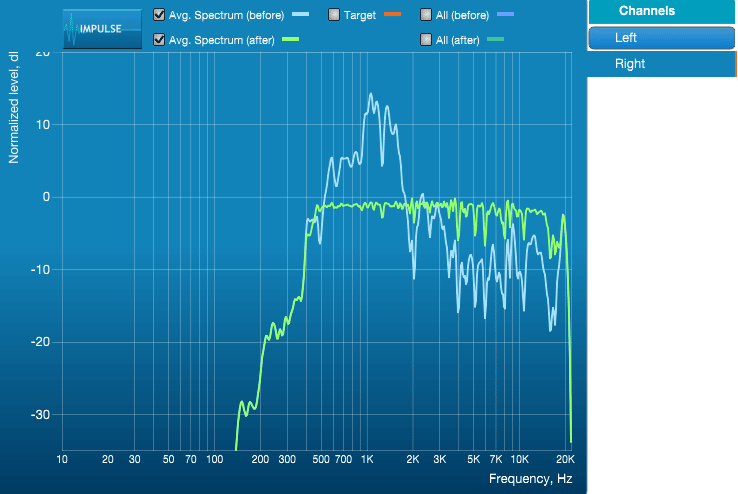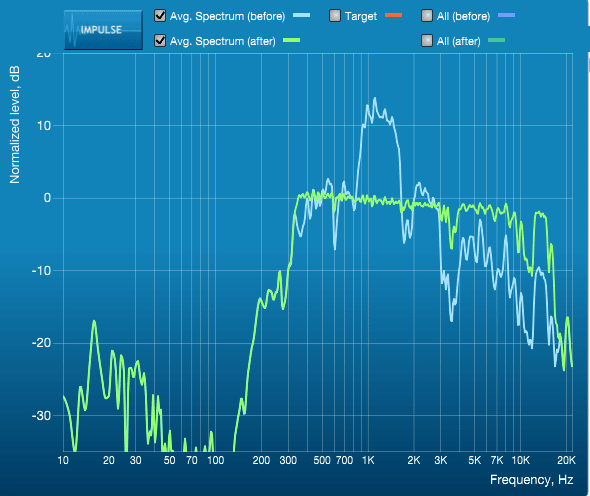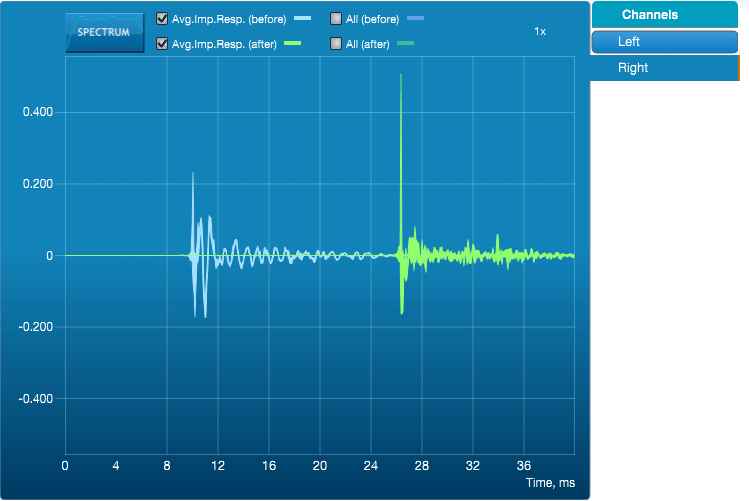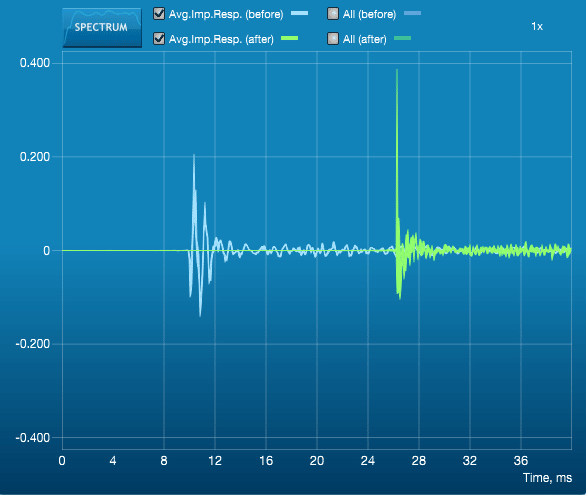Abstract: How does multiple mic-positions get other DRC-results than a single one?
Many of the DRCs today emphasizes to use many mic-positions instead of just one in the planned listening position, to widen the sweet spot.
But arguably the perfect correction can only be in ONE spot, right?
Well – theoretically that’s correct, BUT… You have two ears and usually don´t sit all that still, so to calculate the perfect listening position at the tip of your static nose, can´t make your ears very happy!
So what’s the difference measuring-wise and listening-wise, between, ONE perfect mic-position or 4 positions centered around your ears, thus leaving a little room to move your head?


Some small differences noted, mainly in the highs. Now for the impulse response.


Here the filtered impulse response is slightly worse than calculated from the 4 mic situation.
Which is also what the listening test gives. One mic-filter is slightly more “megaphonic” than the 4 mic-filter. Only a hint, but easily enough recognizable.
Conclusion: Use more than one mic-position to calculate your DRC-filter, to allow for two ears and moving your head a little. Make several DRC-filters if your solution allows, to switch between them. Make A/B tests to conclude which sounds best in your case.

Seems the location and direction of the measurement mic is far more important, than most might think?
The suggestion to keep several “profiles” – one optimized for Your solo lisrening and another with a larger sweetspot when Your buddies are included – might be a smart move!
Nice article!
Interesting idea to widen the sweetspot of listening, from a single point, to a little wider area for ONE person and then widen it more with another optimized DRC-filter for more listeners spread over alarger area of the listening room.
Swapping between the optimized filters with ease, thats unheard of before this DRC.